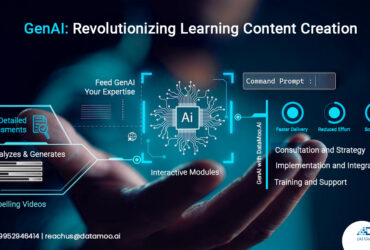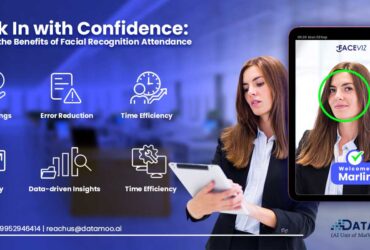
- May 2, 2024
- Mathu G
- NLP, Technology
In today’s data-driven world, the ability to extract information from images is crucial. Optical Character Recognition (OCR) technology has long played a vital role, transforming scanned documents and images into editable and searchable text. However, traditional OCR often faces limitations, especially when dealing with invoices.
The Template Traps
Invoices typically follow standardized layouts or templates. While this uniformity might seem beneficial, it creates a challenge for traditional OCR. Training an OCR model for accurate extraction requires a vast dataset encompassing all the variations within those templates. This translates to high costs for data collection, lengthy training times, and limited adaptability to new templates.
Introducing the GenAI Revolution
Generative AI (GenAI) is a game-changer in the world of OCR and image extraction. Unlike traditional methods, GenAI doesn’t rely solely on template-specific training data. It leverages its understanding of language and context to extract common data across diverse text sources, even from invoices with different layouts.
This revolution extends far beyond OCR and image extraction. Its ability to generate creative text formats, translate languages, and produce realistic content has far-reaching implications for various industries. From personalized marketing campaigns to automated content creation, GenAI promises a future brimming with possibilities.
A Case Study: Breaking Free from Templates
Let’s consider a real-world scenario. Imagine a company that receives invoices from hundreds of vendors, each with unique templates. Traditionally, they would need to create a separate OCR model for each template, requiring a massive dataset for each model and significant investment in data collection and training.
With GenAI, this approach becomes obsolete. GenAI can be trained on a broader dataset encompassing various invoice formats. It can then analyze a new invoice, regardless of the template, and identify and extract common data points like vendor name, invoice number, date, and total amount. This significantly reduces:
Dataset Dependency: No more need for massive, template-specific datasets.
Implementation Time: Training GenAI models takes significantly less time compared to traditional methods.
Overall Costs: By eliminating the need for individual template-based models, GenAI offers substantial cost savings.
Enhanced Accuracy: GenAI’s ability to understand context leads to improved accuracy in extracting common data from diverse invoices, even with poor quality or handwritten elements.
GenAI in Action: Streamlining Workflows Across Industries
GenAI OCR has the potential to revolutionize data processing across various industries. Here’s a deeper dive into how GenAI OCR can streamline workflows and automate tasks:
Enhanced Accuracy and Efficiency:
Traditional OCR struggles with complex layouts, handwritten text, and poor-quality scans. GenAI OCR leverages advanced machine learning algorithms to handle these challenges, resulting in more accurate data extraction and reduced need for manual corrections. This translates to faster processing times and significant cost savings.
Improved Data Understanding:
GenAI OCR goes beyond simple text recognition. It can interpret context and identify specific data points within documents, such as invoice amounts, patient IDs, or product codes. This allows for automatic data population in enterprise systems, eliminating the need for manual data entry and reducing the risk of errors.
Streamlined Workflows:
By automating data capture and processing tasks, GenAI OCR frees up employees from tedious, repetitive work. This enables them to focus on higher-value activities that require human judgment and expertise. For instance, in finance departments, employees can shift their focus from data entry to analyzing financial data and identifying trends.
Advanced Document Processing:
GenAI OCR can handle a wider range of document types than traditional OCR. It can process not just invoices and receipts, but also medical records, legal documents, and other complex formats. This versatility makes GenAI OCR a valuable tool for organizations that deal with a high volume of diverse documents.
Integration with Existing Systems:
GenAI OCR can be easily integrated with existing enterprise systems, such as ERP (Enterprise Resource Planning) and CRM (Customer Relationship Management) software. This allows for seamless data transfer and automated workflows, further enhancing operational efficiency.
Real-world Applications:
Beyond the examples mentioned earlier, GenAI OCR can be applied in various scenarios. Imagine a scenario in the legal industry where contracts are automatically reviewed and analyzed for key terms and clauses. Or, in the manufacturing sector, GenAI OCR can be used to automate quality control processes by extracting data from inspection reports.
The potential applications of GenAI OCR are vast and constantly evolving. As GenAI technology continues to develop, we can expect even greater advancements in data processing accuracy, efficiency, and automation across all industries.
Conclusion: The Future of Smart Extraction
GenAI offers a powerful new approach to OCR and image extraction. While traditional methods still have their place, GenAI’s ability to learn from diverse data sources and adapt to new information makes it a revolutionary tool. As GenAI technology continues to evolve, we can expect even more sophisticated document automation and data extraction capabilities in the years to come.
Ready to Explore GenAI OCR?
If you’re looking to improve your OCR accuracy, reduce processing times, and streamline your document handling processes, GenAI might be the solution you’ve been waiting for. Explore the possibilities of GenAI OCR and unlock a new level of efficiency in your organization.
Beyond Templates
While GenAI offers a significant leap forward, it’s important to acknowledge that it’s still under development. Compared to traditional rule-based OCR solutions, GenAI might require more upfront investment in model development. However, the long-term benefits in terms of adaptability and accuracy often outweigh these initial costs.
Looking ahead, the future of GenAI in image extraction is bright. We can expect advancements in its ability to handle complex layouts, integrate seamlessly with existing workflows, and continuously learn and improve its performance.






